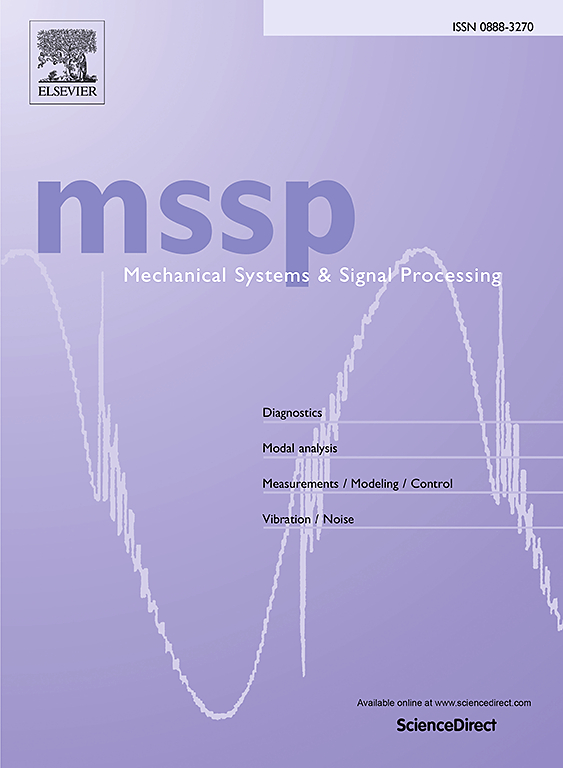基于迁移学习和贝叶斯校正的双桥结构健康监测数据的稀缺性和不确定性
IF 7.9
1区 工程技术
Q1 ENGINEERING, MECHANICAL
引用次数: 0
摘要
本文将迁移学习应用于结构健康监测(SHM)的背景下,研究了两座几乎相同的桥梁,它们的建造日期相隔近30年。这项研究的独特性被这样一个事实增强了,即新桥已经被报道损坏了近十年,没有监测数据可以从其未损坏的情况下获得。为了克服机器学习算法训练中的数据稀缺性和不确定性,本文提出了一个多学科框架,将旧桥未损坏状态下的监测数据重用到新桥的损伤检测中。建立了用有限元法求解的数值模型,模拟了新桥的完好状态。该模型通过使用Metropolis-Hastings算法的马尔可夫链蒙特卡罗模拟,使用贝叶斯推理进行校准,以解释认知不确定性的来源。在贝叶斯更新过程中,采用Sobol指标进行全局敏感性分析,识别影响模型输出的主要参数。结果表明,该数值模型能够模拟新桥在未损坏状态下的动态,并且通过域自适应迁移学习能够自适应旧桥的数据,从而可以重复使用这些数据来训练机器学习算法,以便在考虑随机不确定性的情况下对新桥的观测进行分类。该框架在解决SHM背景下的数据稀缺性和不确定性、模型更新和机器学习挑战方面提供了实质性的好处,但也揭示了无监督迁移学习的一些局限性。本文章由计算机程序翻译,如有差异,请以英文原文为准。
Transfer learning and Bayesian calibration addressing data scarcity and uncertainty for structural health monitoring of twin concrete bridges
This paper applies transfer learning in the context of structural health monitoring (SHM) to two almost identical bridges located side-by-side, whose construction dates are separated by almost three decades. The uniqueness of this study is enhanced by the fact that the newer bridge has been reported as damaged for almost one decade, with no monitoring data available from its undamaged condition. To overcome data scarcity and uncertainty in the training of machine learning algorithms, this paper proposes a multidisciplinary framework to reuse monitoring data in the undamaged condition from the older bridge to address damage detection in the new one. A numerical model solved by the finite element method is developed to simulate the undamaged condition of the new bridge. The model is calibrated to account for sources of epistemic uncertainty using Bayesian inference through Markov-Chain Monte Carlo simulations with the Metropolis–Hastings algorithm. During the Bayesian updating process, a global sensitivity analysis using Sobol indices is proposed to identify the main parameters influencing the model’s outputs. The results show that the numerical model is capable of simulating the dynamics of the new bridge in its undamaged condition, and transfer learning through domain adaptation is capable of adapting the data from the old bridge so that it can be reused to train a machine learning algorithm to classify observations from the new bridge, taking into account random uncertainty. This framework provides substantial benefits in addressing data scarcity and uncertainty, model updating, and machine learning challenges in the context of SHM but also reveals some limitations of unsupervised transfer learning.
求助全文
通过发布文献求助,成功后即可免费获取论文全文。
去求助
来源期刊

Mechanical Systems and Signal Processing
工程技术-工程:机械
CiteScore
14.80
自引率
13.10%
发文量
1183
审稿时长
5.4 months
期刊介绍:
Journal Name: Mechanical Systems and Signal Processing (MSSP)
Interdisciplinary Focus:
Mechanical, Aerospace, and Civil Engineering
Purpose:Reporting scientific advancements of the highest quality
Arising from new techniques in sensing, instrumentation, signal processing, modelling, and control of dynamic systems
 求助内容:
求助内容: 应助结果提醒方式:
应助结果提醒方式:


